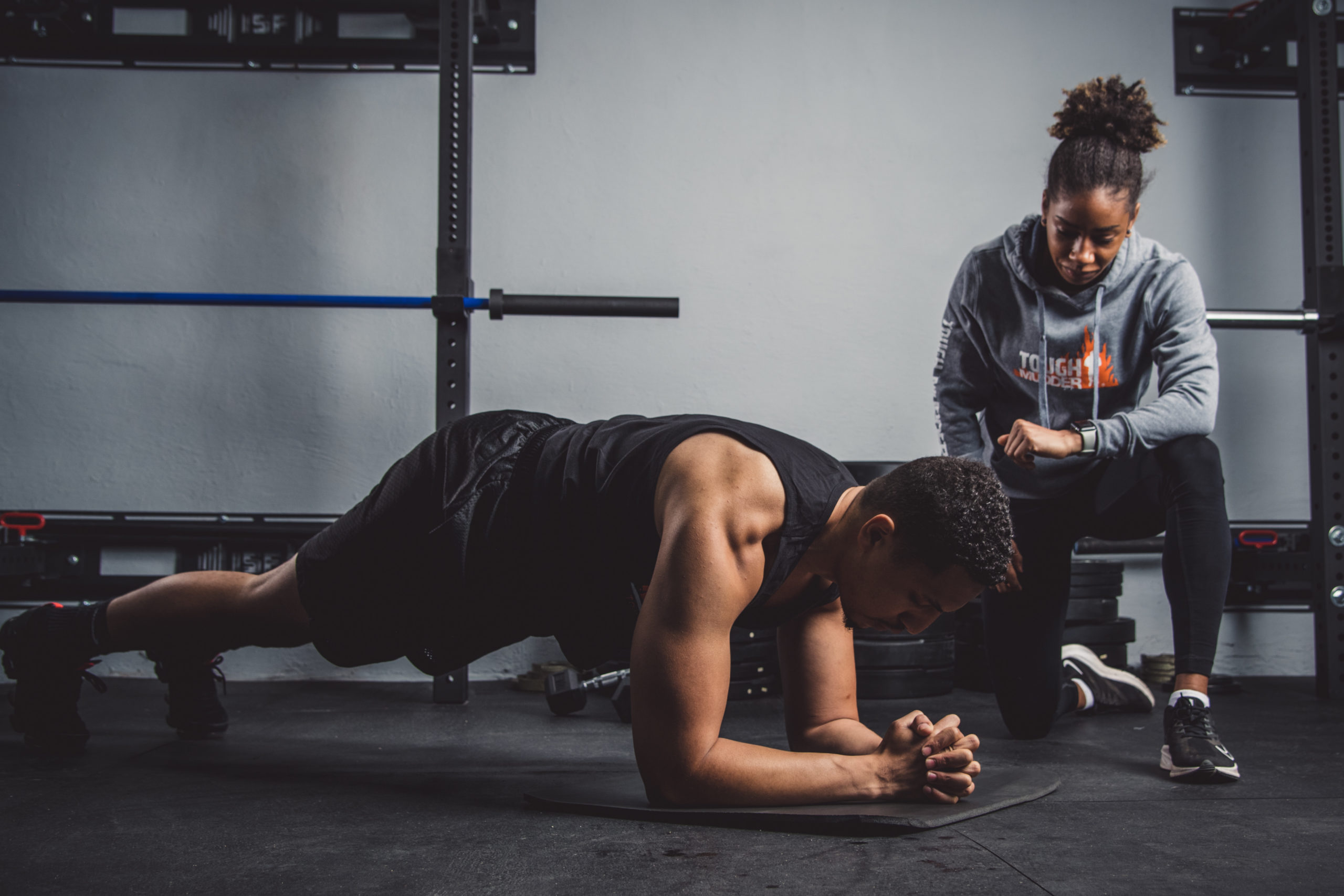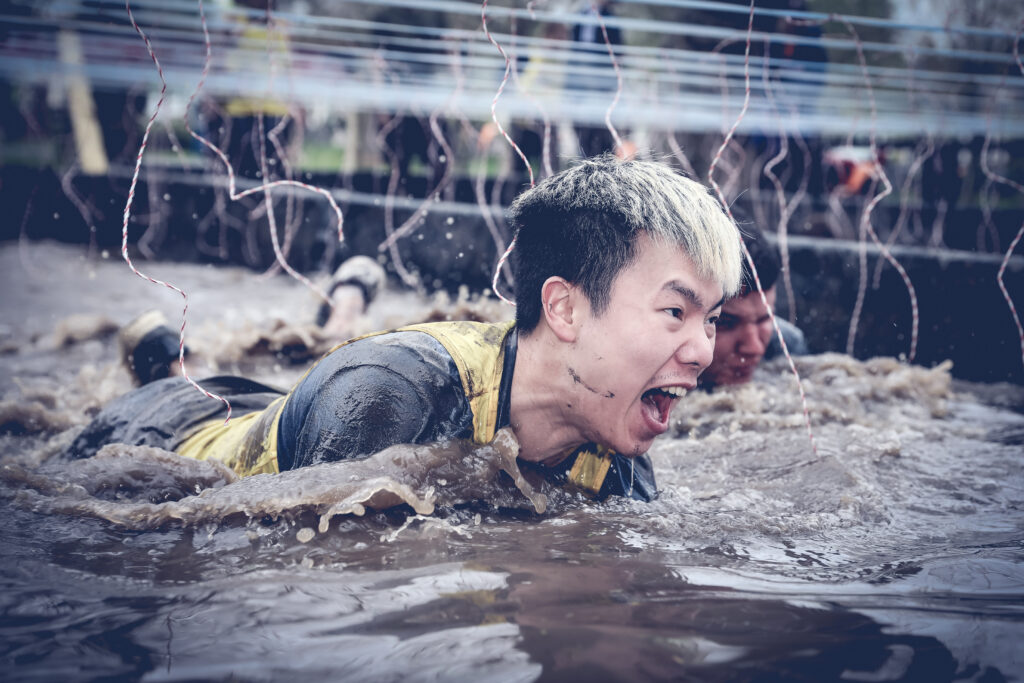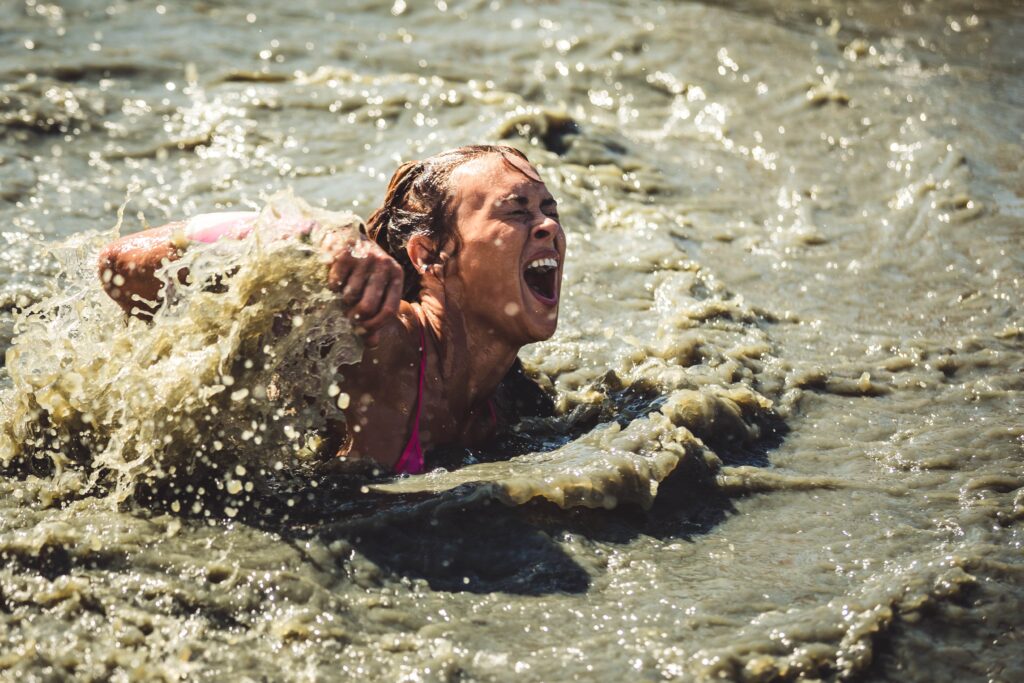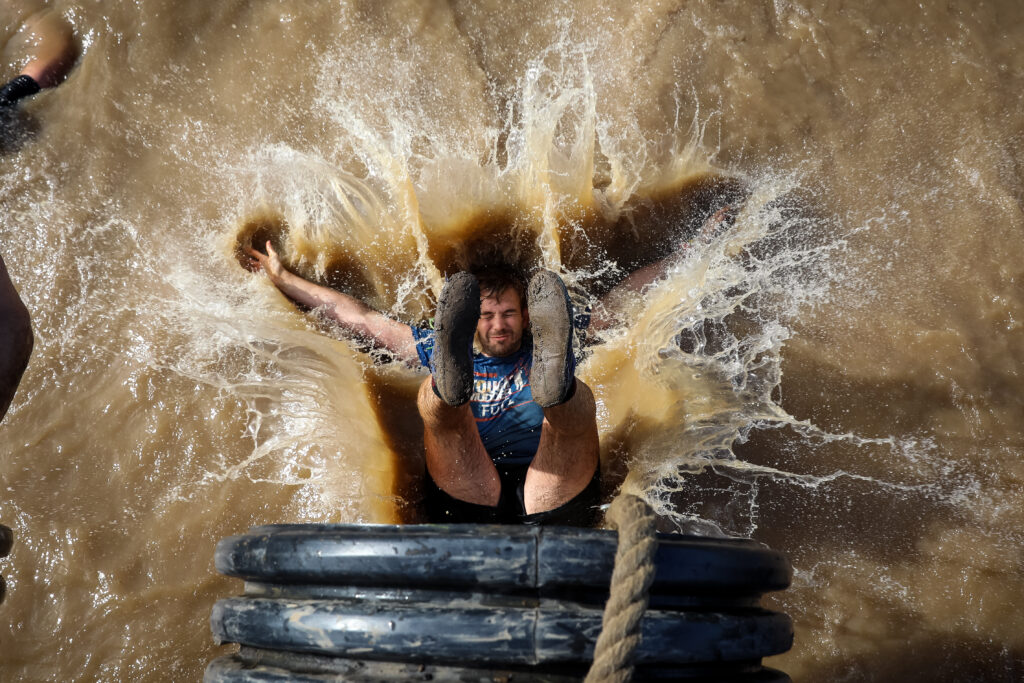Have you done a Tough Mudder event yet? If you have, then you know these events challenge not only your endurance, but also your strength, agility, and mental grit. You will likely be required to jump over walls, climb ropes and crawl through mud. To do this you can’t just train linear movement patterns, like standard squats, deadlifts, rows, etc. We’ve got you covered with specific gym beginner exercises.
So, when it is cold outside and you’re in your gym, you will definitely have to get creative with your workouts, focusing on full-body movements that increase your power, flexibility, stability, and grip strength. These exercises are designed to help you conquer every obstacle you might find on the Tough Mudder course.
You’re going to load your body unilaterally, asymmetrically, and unconventionally to build an unbreakable core, unshakeable stability, and unbeatable strength. Are you ready? Here are some common exercises and tips for beginners hitting the gym.
Six Gym Beginner Exercises
1. DB Goblet Squat
These are excellent gym beginner exercises to build leg strength and core stability.
Instructions: Stand with your feet about shoulder-width apart, and slightly turned out. Holding the weight at your chest, get tall through your spine and pack your shoulders. Keeping your chest tall and core tight, bend your knees and bring your hips down towards your heels.
Make sure to track your knees over your 2nd toes (don’t let your knees collapse in). Inhale as you pull your hips down, and exhale as you drive through your feet to stand tall again.
2. Plank Kettlebell (or Dumbbell) Drag
Having a strong, stable core will help you conquer so many of the obstacles you will likely encounter – crawling under barbed wire, crossing a cargo net, walking across rope ladders, etc. The plank kettlebell drag will not only build your core endurance, but also your anti-rotational strength. The key is to keep your shoulders and hips square as you drag a heavy weight underneath you.
Instructions: Start in a high-plank position – hands on the ground, arms fully extended, and feet about hips-width apart – with one weight outside of your right hand. Get long from head to heels. If you’re doing plank correctly, you should be able to draw a straight line through your head, shoulders, hips, and heels.
Maintaining this strong position, reach your left hand underneath your body to grab the weight and drag it along the floor to the outside of your left shoulder. Then plant your left hand, and reach your right hand underneath you to drag the weight back to the right. Keep going, and don’t let your hips or shoulders dip or twist.
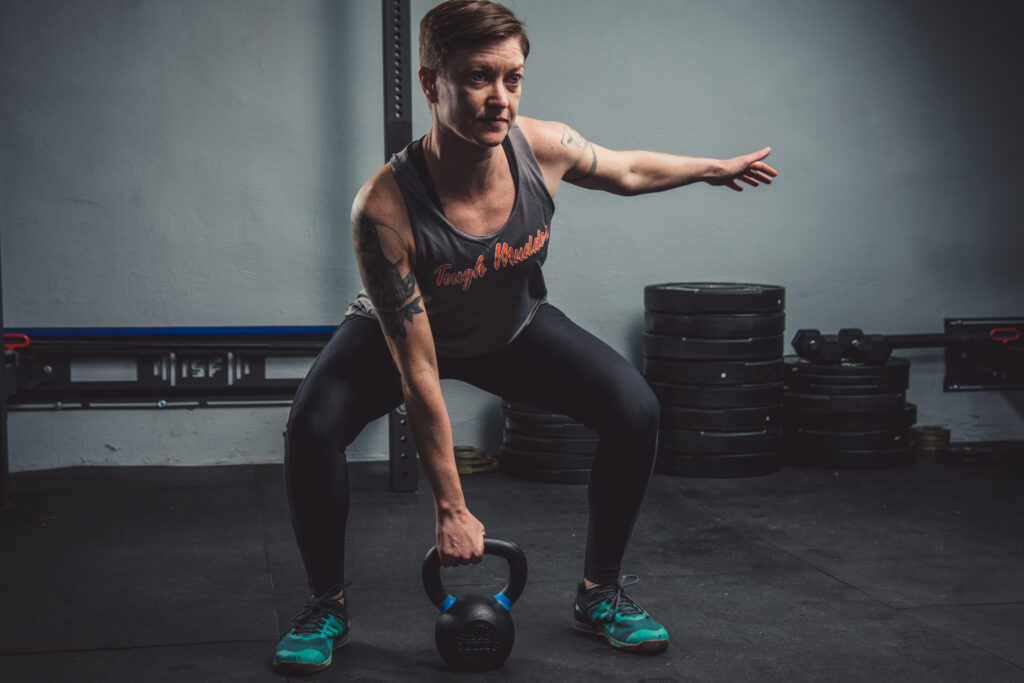
3. Kettlebell (or Dumbbell) Suitcase Carry
You’ll probably face an obstacle that requires you to balance, whether that means crossing a balance beam, hopping from post-to-post, or walking across a rope bridge. Your ability to maintain stability is crucial. That’s your focus here. To make this exercise more challenging, step one foot right in front of the other, as if you were walking on a tightrope.
Instructions: Choose a moderate- to heavy weight, and hold the weight in your right hand. Stand tall with your shoulders and hips square, shoulders packed, and core tight. Step your right foot directly in front of your left without letting the weight pull you off-centre, and without leaning to the right.
You should feel your core working hard to stabilise your spine. After 30 seconds, switch hands and repeat.
4. Box Jumps
You will be required to jump over logs, or even walls. In order to overcome these obstacles, you’ll need enough power in your legs to get some serious height. That’s where box jumps come in. You can either train this exercise for max speed, or for height. We recommend focusing on height.
Instructions: Choose a tall box that you know you can safely jump onto. Start by standing tall facing the box. Squat down, and then drive powerfully through your legs while driving your arms to land softly on top of the box in the squat position.
Make sure to land with soft joints, and drive your knees towards your 2nd toes. Don’t let your knees collapse in. Step down off the box, reset, and repeat by jumping back up on the box..
5. Inverted Rows
To prepare yourself to climb an inverted wall out of a muddy water pit, or traverse across a hanging rope, you’ll want to increase your horizontal pulling strength. The inverted row does just that.
Instructions: Holding onto a squat bar or a suspension training system (like TRX), step your feet forward so that you’re leaning back. Keep your hips lifted by engaging your glutes and squeezing your abs. Pull your chest towards the bar while keeping your body in a straight line. Lower yourself back to the start position with control. For a greater challenge lean further back, or elevate your feet on a box or bench.
To make this exercise easier, don’t lean back as far. For a greater challenge, place your feet on an elevated surface.
6. Resistance Band Sprint-in-Place
The hardest obstacle on your Tough Mudder course might just be the steep, relentless hills the terrain sometimes calls for in-between obstacles. Practicing resisted sprints will build your hamstring and glute power, so you can charge the hills and beat the fatigue.
Instructions: Attach a super band to a solid anchor point. Step into the band so that it’s against the front of your waist, and take a few steps forward. Leaning slightly into the band, begin “sprinting”. You won’t go anywhere, since the band will be holding you in place. Pump your arms and drive your legs as fast as you can, with control.
The most attractive thing about Tough Mudder events is that you don’t have to follow a specific training plan to prepare. Everyone starts at a different fitness level and brings their own strengths and weaknesses. That said, these movements represent the “universals” that will help you on any Tough Mudder course, with Mudder Nation there to give you a hand if you need anything.
